Featured
Featured
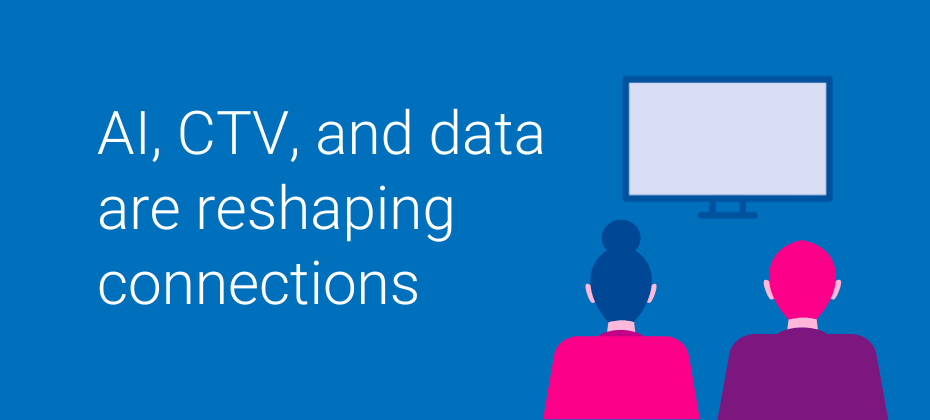
As artificial intelligence (AI), connected TV (CTV), and data collaboration continue to advance, advertisers are discovering new ways to meet audiences where they are; on their terms and in their spaces. These innovations are creating opportunities to deliver more personalized, impactful campaigns that were unimaginable just a few years ago. At Cannes Lions 2025, we sat down with industry leaders from Butler Till, Comcast Advertising, Index Exchange, IQVIA Digital, Optable, PMG, Samsung Ads, and Sports Innovation Lab. From reimagining the living room experience to using AI in practice for better outcomes, here’s what we learned about the trends driving advertising forward. 1. CTV turns living rooms into active spaces CTV has turned the living room into a hub of interaction, discovery, and commerce. Younger audiences are using their TVs like mobile devices; streaming, learning, and even controlling their homes. This shift is creating new opportunities for advertisers to deliver relevant, personalized experiences where audiences are already engaged. With premium content and interactive tools, the living room is no longer just a passive space, it’s where attention meets action, and where brands can connect with audiences in meaningful ways. How Experian helps With Experian, advertisers can connect first-party data with CTV IDs, ensuring accurate and measurable targeting while maintaining a privacy-first approach. That means brands reach viewers with messages that feel personal, without losing trust. “We surveyed 1,000 smart TV owners and found that younger audiences are using their TVs like mobile devices. Two-thirds use them for social media, 40% for self-improvement like Coursera or TED Talks, and 25% for interactivity; controlling appliances or home temperatures. Interactivity with connected TVs is skyrocketing.”Justin Evans 2. Creators build stronger connections with audiences Creators are no longer limited to social media; they are now a driving force in CTV. Creator led programming is capturing attention and driving post view actions, offering advertisers a unique way to connect with passionate, engaged audiences. By thinking of creators as “micro networks” with built in communities, advertisers can meet fans where they already gather and deliver authentic, impactful messages that resonate. How Experian helps Experian helps advertisers tap into the creator economy by identifying topical audiences that align with influencer niches—like food, travel, gaming and entertainment—and activating them across the open web. Through Audigent’s integration with DV360, brands can pair Experian's expansive audience targeting capabilities with Audigent's Curated Deals to reach engaged viewers in creator-led environments. This approach ensures ads appear where audiences are most receptive, enhancing relevance and performance. “The creator economy is moving into TV. It’s incredible to see social influencers, once dominant on platforms, now creating high quality content for streaming, networks, and more.”Gina Whelehan 3. Data collaboration that drives better results Advertisers rely on data to reach the right audiences, but privacy concerns are reshaping how it’s collected, shared, and used. Data collaboration enables brands to combine multiple data sets (like first-party data and syndicated audiences) to improve planning, activation, and measurement. While privacy remains a priority, the focus is on creating actionable insights that drive better results and build trust with consumers. By focusing on consented, privacy safe identity solutions, advertisers can achieve better outcomes while respecting consumer privacy; a win-win for brands and audiences alike. How Experian helps Experian’s privacy-first approach ensures that all data activation occurs with compliance and consent. By maintaining high match rates, offering flexible collaboration options (including clean rooms, first-party data onboarding, and syndicated audiences) and adhering to transparent methodologies, Experian facilitates seamless collaboration between brands, publishers, and platforms. This helps build trust and strengthen long-term connections with audiences. “The area we’re most excited about is identity resolution on the publisher side. Publishers can reinsert signal and create better results for advertisers. This wasn’t always well-articulated, but today we have case studies proving publishers can help improve outcomes.” Vlad Stesin 4. Optimizing supply paths for better outcomes Supply path optimization (SPO) helps advertisers improve campaign efficiency by increasing viewability and reducing waste. Supply-side decisioning builds on this by identifying the audiences advertisers want to reach, the content those audiences consume, and the publishers with the most relevant inventory. Together, these strategies create a more intelligent and efficient ecosystem, ensuring ads are delivered in the right context, to the right people, on the right platforms. How Experian helps Experian’s data solutions, including both Experian’s and Audigent’s contextual and identity capabilities, are available across sell-side (SSPs) and buy-side (DSPs) platforms, enabling smarter decision-making throughout the media supply chain. Audigent’s direct integrations with publishers provide an unfiltered view into available inventory, offering deeper insights that inform campaign optimization. These insights can be activated in real time and transacted within advertisers’ existing buying platforms. By powering real-time intelligence across the ecosystem, from advertisers to DSPs, SSPs, and publishers, Experian and Audigent help drive better outcomes, more efficient media spend, and greater value for all participants. “Sell-side decisioning activates the intelligence of the exchange, along with partners like Experian, to optimize auctions in real time. This helps pre-decision buys that flow to the DSPs, making the buying process smarter, more efficient, and ultimately driving better value for marketers and publishers.” Mike McNeeley 5. AI that streamlines agency workflows AI is a practical tool that agencies are using to streamline workflows and deliver better results. From planning and pacing to creative iteration, AI is helping teams move faster and smarter. In fact, 67% of global marketing and communications professionals now use AI for content creation frequently or all the time, underscoring its role in modern workflows. The key is to think of AI as a navigator, not a replacement. It handles repetitive tasks, freeing up teams to focus on strategy and creativity, while enabling faster tests, fewer dead ends, and better client clarity. How Experian helps Experian uses AI and machine learning to deliver highly personalized marketing solutions. In our Digital Graph, advanced clustering algorithms analyze household and individual device connections, improving targeting and measurement accuracy. We also use AI powered audience recommendations to create tailored audience solutions for clients. Our contextual data models, powered by Audigent’s contextual engine, further improve this process by analyzing bidstream traffic in real time, ensuring audiences are aligned with the most relevant inventory. “We’ve extended our platform with Marketplace, which lets us integrate third-party partners, new tech, and data seamlessly into activation. Clients are asking for this level of innovation, especially with the speed at which AI is evolving and transforming what’s possible in marketing.”Sam Bloom Connecting the dots: Data, creativity, and outcomes The common thread across these insights is how we connect with audiences, collaborate on data, and create meaningful outcomes. By reimagining the living room experience and utilizing AI and creator-led programming, brands are embracing innovation. How Experian helps Experian helps you build privacy-first identity foundations, collaborate seamlessly, optimize supply paths, streamline with AI, and connect through creators. Let's start a conversation FAQs What is CTV, and why does it matter now? CTV brings premium, interactive streaming to the largest screen at home, allowing brands to reach engaged viewers with measurable, personalized experiences. What is data collaboration, and how does it stay privacy-first? It’s the consented, secure use of first-party and partner data (often via clean rooms) to improve planning, activation, and measurement without exposing raw consumer data. What do “SPO” and sell-side decisioning actually do? SPO streamlines the path from advertiser to publisher, reducing waste and improving quality. Sell-side decisioning adds real-time intelligence to the exchange, delivering the proper context and audience more efficiently. How are creators changing TV advertising? Creator-led programming functions like “micro networks” with built-in communities, helping brands show up where fans are already engaged and ready to act. How are living rooms becoming “active spaces”? Viewers use TVs like mobile devices, discovering content, learning, shopping, and interacting; advertisers can meet their intent and drive post-view actions. Latest posts

Demand-side platforms (DSPs) are more than just technology providers, they’re strategic partners, helping marketers answer the key question: “How should I spend my media budget?” A leading DSP struggled to attribute consumer actions across digital channels such as connected TV (CTV) and display. Without connecting impressions to conversions, they risked losing client trust and ROI proof. With Experian’s Digital Graph, they resolved 84% of IDs and increased match rates, strengthening attribution and client confidence. The challenge A leading DSP had trouble showing which ads drove results across CTV, display, and digital. Without linking ad views to conversions, they couldn’t prove ROI. The missing piece was attribution. They needed to show which channels drove conversions, but without strong identity resolution, it was hard to connect CTV ads to website activity. See how Experian is shaping addressability in CTV What is Experian's Digital Graph? Built from trillions of real-time data points and updated weekly, Experian’s Digital Graph connects billions of identifiers across devices and households, such as cookies, mobile ad IDs (MAIDs), CTV IDs, IP addresses, universal IDs, and more. It gives DSPs a reliable foundation by linking these identifiers back to households and individuals, improving DSPs' ability to offer attribution by better connecting impressions to conversions. Learn more about our Digital Graph here What makes the Digital Graph unique is its scale and freshness. It ingests trillions of signals in real time and delivers updates weekly. That consistency matters: it gives DSPs confidence that they’re working with the most accurate view of digital identity. AI and machine learning (ML) are core to how we maintain that level of accuracy. Our models use sophisticated clustering algorithms to analyze device connections at both household and individual levels. By evaluating data points such as timestamps, IP addresses, user agents, cookie IDs, and device identifiers, these algorithms create precise device groupings that enhance targeting and measurement accuracy. The models are continuously refined, ensuring our clients can better understand consumer behaviors within households and activate more effective, personalized marketing. Think of it like connecting puzzle pieces scattered across devices and channels. On their own, each piece doesn’t say much. Together, they reveal the full picture of who saw an ad, engaged, and converted, and which ads performed best. Watch the video The solution By syncing its cookies with the Digital Graph, the DSP gained access to related identifiers, including: MAIDs CTV IDs IP addresses Experian cookies This expanded identity universe gave the DSP a unified view of individuals and households, making it possible to connect impressions to conversions across devices and channels. With each weekly refresh, attribution models stayed accurate and up to date, turning fragmented signals into proof of performance. Results Within weeks, the DSP saw measurable improvements: 84% of IDs synced 9% increase in match rates With a stronger foundation of digital identifiers, the DSP matched more MAIDs, CTV IDs, and IP addresses to conversions. This allowed them to show clients exactly which ads and channels drove ROI, transforming impression reports into actionable proof of performance and strengthening client trust. See how MiQ strengthened their Identity Spine with Experian's Digital Graph Why attribution matters now Attribution has never been more critical. With signals fading and marketing budgets under pressure, DSPs need reliable data to prove performance. Experian’s Digital Graph takes a multi-ID, always-on approach, refreshed weekly with trillions of signals. This delivers consistency and accuracy that single-point, stale-ID solutions can’t match. For this DSP, that meant transforming attribution from guesswork into clear proof, strengthening client trust, and proving ROI across channels. Download the full case study Connect with us today to see how our Digital Graph can help you maximize advertiser trust and ROI. Ready to strengthen your approach to attribution? FAQs What is Experian’s Digital Graph? Experian’s Digital Graph is a privacy-conscious identity resolution solution built from trillions of real-time data points, refreshed weekly, that links identifiers like cookies, MAIDs, CTV IDs, Unified I.D. 2.0 (UID2), ID5 IDs and IP addresses to households and individuals. How does Experian’s Digital Graph improve attribution? Experian’s Digital Graph improves attribution by connecting impressions to conversions across devices and channels, giving DSPs a clearer view of which ads and channels drove results. What makes Experian’s Digital Graph different from other solutions? While many platforms rely on single, static IDs, Experian’s Digital Graph uses a multi-ID, always-on approach with weekly refreshed, ensuring accuracy even as signals shift. What results can DSPs expect when using Experian’s Digital Graph? When you use Experian’s Digital Graph, you can expect higher match rates, more synced IDs, clearer attribution models, and stronger proof of ROI for your clients. Because Experian’s Digital Graph serves as the backbone of the industry, it also helps DSPs maximize the scale and reach they can deliver to advertisers. Is Experian’s Digital Graph privacy-compliant? Yes. Experian’s Digital Graph is designed with privacy in mind, ensuring compliance while still delivering accurate attribution insights. Latest posts

If Santa used data to plan his holiday campaign, he’d call Experian. After all, how else could he deliver the right gifts to the right household? From sleigh bells to savings alerts, the holiday season isn’t just about Christmas. Whether you’re celebrating Hanukkah, Kwanzaa, Diwali, Lunar New Year, or simply the season of giving, brands have one thing in common: a need to reach the right audience at the right time, with messaging that resonates. Retail sales for 2025 are expected to grow 2.7–3.7% YoY, reaching nearly $5.48 trillion, with mobile commerce driving 75% of e-commerce growth. With so many brands vying for attention, delivering the right message to the right audience can be the difference between a one-time click and a lifelong customer. In this article, we’ll unwrap Experian’s holiday shopping audiences, including 25 new audiences, designed to help you reach the most relevant shoppers for your holiday campaigns. These audiences are available for activation on-the-shelf of most major platforms, including TV, social, and programmatic. You can find the complete audience segment name in the appendix. 2025 Holiday spending trends and insights report Download our latest report, in collaboration with GroundTruth, for data-driven insights you can use to refine your messaging and reach the right audience in their preferred channels this holiday season. Download now Deck the data halls: What separates Experian's syndicated audiences? Utilize Experian’s syndicated audiences to ensure your marketing messages resonate with shoppers. Experian’s 3,200+ syndicated audiences can be sent to 200+ leading social platforms, such as Meta and Pinterest, TV, programmatic advertising platforms, and directly within Audigent for activation within private marketplaces (PMPs). Reach consumers based on who they are, where they live, and their household makeup. Experian ranked #1 in accuracy by Truthset for key demographic attributes. Access to unique audiences through Experian’s Partner Audiences available on Experian’s data marketplace, within Audigent for activation in PMPs, and directly on platforms like DirectTV, Dish, Magnite, OpenAP, and The Trade Desk. Four audience categories to target this holiday season Even Santa needs help organizing his list these days, especially with so many kinds of households to deliver holiday magic to. With the U.S. population growing by roughly 21.7 million people in the last decade, there are more holiday tables to set, more last-minute carts to fill, and more families hitting the road than ever before. Experian Audiences and Partner Audiences help Santa (and your brand) get the message just right. New this season! Experian now offers Consumer Packaged Goods audiences to help you reach consumers ready to get into the holiday spirit with seasonal baking, cooking, and other goods. Here are four households on Santa’s sleigh route and how you can reach them with Experian: The merry makers The list-checkers The holiday hoppers The entertainers Let’s unwrap the segments within each category. This group isn’t just celebrating; they’re setting the stage. Whether they’re prepping for Friendsgiving or a cozy Diwali dinner, they’re fueling the season with food, décor, and hospitality. Holiday hosts and entertainers allocated more than $260 on food, candy, and decor alone in 2024, and according to GroundTruth, Saturday, December 7, 2024, was the busiest in-store shopping day across nearly every major category. Grocery store sales climbed 2.1% during the 2024 holiday season, and hosting Thanksgiving cost an average of $431. Here are 10 holiday host audiences to target this holiday season and how you can reach them with Experian: NEW! Bakeries High Spend NEW! Caterers High Spend NEW! Chocolate Candy Box Bag Bar Shoppers 3.5oz Plus NEW! Chocolate Shoppers NEW! Cocktail Mix Shoppers NEW! Frosting and Frosting Mix Shoppers NEW! Marshmallow Shoppers NEW! Ready-to-Use Pie Crust Shoppers NEW! Sugar Shoppers Holiday Shoppers: High Spenders How to use these audiences Santa knows this household is hosting the holiday magic, so he loads his sleigh with gourmet cocoa, festive napkins, and extra marshmallows to make sure the party is stocked with seasonal favorites. A consumer-packaged goods brand launching a new holiday baking product can reach Chocolate Shoppers, Holiday Shopping High Spenders, and Ready-to-Use Pie Crust audiences to connect with high-intent hosts prepping festive desserts. This household isn’t just shopping; they’re creating the perfect gifts. In 2024, U.S. shoppers planned to spend more than $1,000 on holiday gifts as online purchases surged, totaling $241 billion between November 1 and December 31. Looking to 2025, according to our latest holiday insights, just 22% of consumers expect to spend more, while 27% anticipate cutting back. With consumer confidence still on an uneven footing and inflation having climbed up to 2.9%, shoppers are approaching holiday lists with greater caution. Experian’s purchase-based data shows mass retail remains a bright spot, with value-driven spending holding strong amid recent dips and rebounds, as shoppers cautiously resume purchases. That makes gift-focused households more deliberate with their choices and reinforces that brands emphasizing value and trust will earn lasting loyalty. Here are 10 list-checker audiences to consider this holiday season: NEW! Precious Stones Metals Watches Jewelry High Spend Big Box/Club Stores Holiday Shoppers Black Friday Holiday Shoppers Cyber Monday Holiday Shoppers Heavy Buyer/Spenders Holiday Shoppers: In-Store or Online High Spend Gift Shoppers Holiday Shoppers: Apparel (Clothing) Luxury Gift Shoppers Online Coupon Users Post Holiday Shoppers How to use these audiences Santa knows this household goes big when it comes to gifting, so he makes sure their stockings are filled with trinkets, timeless watches, and the kind of treasures that twinkle under the tree. A luxury jewelry brand launching a limited-edition holiday collection can activate Precious Stones Metals Watches Jewelry High Spend and Luxury Gift Shoppers audiences to reach buyers who believe in gifts that sparkle. This household is on the move. From planes and trains to jam-packed highways, travel is back in full force. In 2024, a record 119.3 million Americans traveled during the holiday period, surpassing pre-pandemic levels. Road trips remained the most popular mode, while air travel hit a new high with 7.85 million flyers. Here are 10 holiday travel audiences to target: NEW! Bridge and Road Fees Tolls High Spend NEW! Hotel High Spend NEW! Lodging Hotels Motels Resorts High Spend NEW! Passenger Railways High Spend NEW! Timeshares High Spend NEW! Tourist Attractions and Exhibits High Spend NEW! Travel Agencies and Tour Operators High Spend Holiday Budget Savvy Airline Travelers Holiday Travel - Airline Holiday Travel - Train How to use these audiences For this household, Santa swaps his sleigh for the train car - booking them on a magical Polar Express journey complete with cocoa, carols, and a golden ticket to holiday wonder. When brands want to deliver the same magic, a travel package could bundle tickets to a railway’s Polar Express immersive experience with air travel and lodging, activating the Hotel High Spend, Travel Agencies High Spend, and Passenger Railways High Spend audiences to reach travelers seeking an unforgettable holiday adventure. This household knows how to celebrate from the couch. Whether it’s football, holiday movies, or once-a-year specials, the screen is their gathering place. On December 25, 2024, Americans streamed more than 50 billion minutes of content, making it the most-streamed day in U.S. television history. From dazzling halftime shows to nostalgic holiday classics, entertainment is the heartbeat of the season. Here are 10 entertainer audiences to target: Cable and Streaming TV Service Subscribers Cable Satellite or Streaming Network Subscribers Co-Watchers Cord Cutters Holiday TV NFL Enthusiasts Paid TV High Spenders Screen Size – Large Sports Enthusiasts Streaming Video: High Spenders Download our holiday audience guide How to use these audiences Santa knows this audience loves flipping between a holiday classic and the big game. That’s why he delivers gifts for households craving the latest binge-worthy content. It could be a subscription or a big-screen update wrapped with a bow. These audiences represent a golden opportunity to pair campaigns with highly engaged moments. A beverage brand can target NFL Enthusiasts during a holiday football broadcast with ads for limited-edition game-day packs. Sleigh your campaign goals this holiday season with Experian Audiences The holiday season is the busiest time of year for brands - and for Santa. That’s why he relies on Experian to make his list, check it twice, and be sure every sleigh stop is spot-on. Experian’s data, ranked #1 in accuracy by Truthset, allows brands to reach people based on demographic, geographic, and behavioral attributes (e.g., websites visited and purchase history). By using Experian Audiences in your holiday advertising campaigns, you can reach holiday hosts, gift-givers, entertainers, holiday travelers, and many more. Where can you activate Experian Audiences? Find our audiences available directly on over 30 platforms including: Basis FreeWheel Magnite Nexxen The Trade Desk Viant Microsoft Advertising and more Just as shoppers seek the perfect gifts, with the right strategy, your holiday advertising campaigns can capture the right shoppers. Need a custom audience? Reach out to our audience team and we can help you build and activate an Experian audience on the platform of your choice. Want to activate an Experian syndicated audience on Meta, Pinterest, Snap, TikTok or on a platform not listed above? Contact us today. Additionally, work with Experian’s network of data providers to build audiences and send to an Audigent PMP for activation. You can activate our syndicated audiences on-the-shelf of most major platforms. For a full list of Experian’s syndicated audiences and activation destinations, download our syndicated audiences guide. Explore our other seasonal audiences that you can activate today. View now Activate holiday audiences today with Audigent Planning a performance-driven push this holiday season? Audigent will build customized deals that combine premium Experian syndicated or Partner Audiences and inventory into a single, streamlined deal ID – tailored to your campaign needs. Plus, our powerful supply-side optimization ensures your campaigns deliver top marks in performance. Connect with the Audigent team today at AudigentAgency_Brands@experian.com to get your holiday campaign wrapped and ready to go. Let's make your holiday campaigns magical Appendix Here are the complete audience segment names (taxonomy paths) for all audience segments discussed in this blog post. The merry makers Purchase Predictors > Shoppers All Channels > Bakeries High Spend Purchase Predictors > Shoppers All Channels > Caterers High Spend Retail Shoppers: Purchase Based > CPG Engagement > Chocolate Candy Box Bag Bar Shoppers Retail Shoppers: Purchase Based > CPG Engagement > Chocolate Shoppers Retail Shoppers: Purchase Based > CPG Engagement > Cocktail Mix Shoppers Retail Shoppers: Purchase Based > CPG Engagement > Frosting and Frosting Mix Shoppers Retail Shoppers: Purchase Based > Seasonal > Holiday Shoppers: High Spenders Retail Shoppers: Purchase Based > CPG Engagement > Marshmallow Shoppers Retail Shoppers: Purchase Based > CPG Engagement > Ready To Use Pie Crust Shoppers Retail Shoppers: Purchase Based > CPG Engagement > Sugar Shoppers The list-checkers Purchase Predictors > Shoppers All Channels > Precious Stones Metals Watches Jewelry High Retail Shopper: Purchase Based > Seasonal > Holiday Shoppers: Big Box/Club Stores Shoppers Retail Shoppers: Purchase Based > Seasonal > Holiday Shoppers: Black Friday Retail Shoppers: Purchase Based > Seasonal > Holiday Shoppers: Cyber Monday Retail Shoppers: Purchase Based > Seasonal > Holiday Shoppers: Heavy Buyer/Spenders: In Store Retail Shoppers: Purchase Based > Seasonal > Holiday Shoppers: Heavy Buyer/Spenders: Online Retail Shoppers: Purchase Based > Shopping Behavior > Gift Shoppers High Spend Spenders Retail Shoppers: Purchase Based > Seasonal > Holiday Shoppers: Apparel (Clothing) Retail Shoppers: Purchase Based > Seasonal > Holiday Shoppers: Luxury Gift Shoppers Retail Shoppers: Purchased Based > Shopping Behavior > Online Coupon Users Retail Shoppers: Purchased Based > Seasonal > Holiday Shoppers: Post holiday The holiday hoppers Purchase Predictors > Shoppers All Channels > Bridge and Road Fees Tolls High Spend Purchase Predictors > Shoppers All Channels > Hotels High Spend Purchase Predictors > Shoppers All Channels > Lodging Hotels Motels Resorts High Spend Purchase Predictors > Shoppers All Channels > Passenger Railways High Spend Purchase Predictors > Shoppers All Channels > Timeshares High Spend Purchase Predictors > Shoppers All Channels > Tourist Attractions and Exhibits High Spend Purchase Predictors > Shoppers All Channels > Travel Agencies and Tour Operators High Spend Retail Shoppers: Purchase Based > Seasonal > Holiday Budget Savvy Airline Travelers Retail Shoppers: Purchase Based > Seasonal > Holiday Travel - Airline Retail Shoppers: Purchase Based > Seasonal> Holiday Travel - Train The entertainers Television (TV) > Household/Family Viewing > Cable and Streaming Service Subscribers Television (TV) > Household/Family Viewing > Cable Satellite or Streaming Network Television (TV) > Household/Family Viewing > Co-Watchers Television (TV) > Household/Family Viewing > Cord Cutters Publisher Derived > IAB Television > Holiday TV Lifestyle and Interests (Affinity) > Activities and Entertainment > NFL Enthusiasts Television (TV) > TV Enthusiasts > Paid TV High Spenders Television (TV) > Viewing Device Type > Screen Size – Large Lifestyle and Interests (Affinity) > Sports and Recreation > Sports Enthusiast Retail Shoppers: Purchase Based > Entertainment > Streaming/Video/Audio/CTV/Cable TV: Streaming Video: High Spenders Experian syndicated holiday audiences FAQs Where can I activate Experian Audiences? Experian Audiences can be activated on 200+ leading platforms, including social media (Meta, Pinterest, Snap, TikTok), TV and streaming (DirectTV, Dish, OpenAP), programmatic platforms (The Trade Desk, Magnite, Nexxen), and directly within Audigent PMPs. How many syndicated audiences does Experian offer? Experian offers over 3,200 syndicated audiences, ranging from demographic and geographic segments to purchase-based and lifestyle categories. These are ranked #1 in accuracy by Truthset for key demographic attributes. What’s new for the 2025 holiday season? This year, Experian has introduced 25 new holiday-ready audiences, including consumer packaged goods (CPG) segments like Chocolate Shoppers, Ready-to-Use Pie Crust Shoppers, and Cocktail Mix Shoppers, plus new travel audiences. Can I create a custom audience? Yes. If you need something beyond syndicated segments, Experian’s team can help you build and activate custom audiences tailored to your campaign goals on the platform of your choice. Latest posts

AdTech jargon can feel overwhelming, but we're breaking it down café-style. From first-party data and identity resolution to clean rooms and ID-free targeting, here are the essential terms marketers need to know.
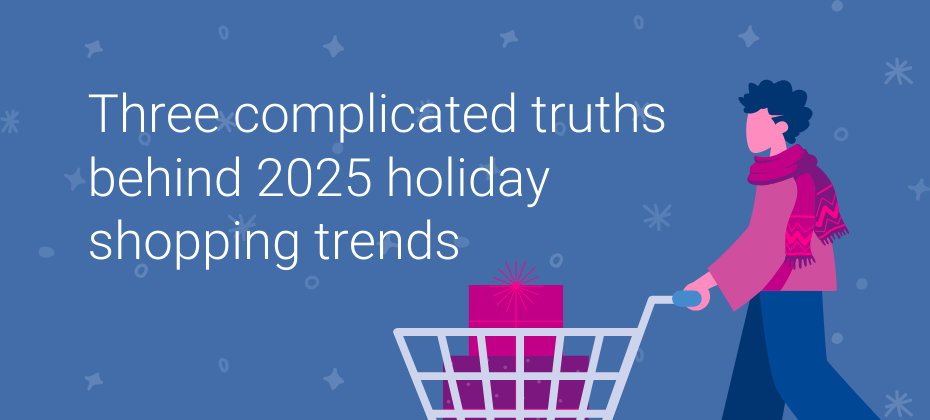
Holiday shopping in 2025 feels a lot like a complicated relationship. Shoppers want deals, but they also want trust. They start shopping early, but they’re still browsing well into December. They love the convenience of online shopping, but they still show up in-store before making the final call.

We spend our days surrounded by screens: at work, at home, and everywhere in between. But audio is the one channel that moves with us, from morning routines to evening commutes, from workouts to household chores. More than two-thirds of U.S. consumers will listen to digital audio every month this year, making it one of the fastest-growing ways to connect with audiences. Experian and Audacy are working together to solve the challenges of fragmented listening, cross-platform targeting, and campaign measurement, helping brands reach people in the moments other channels can’t. Why audio sticks with us Audio fits into life’s in-between moments, from the commute to the workout to the chores, when other media can’t. Unlike video, it doesn’t demand full attention; it joins the flow of daily routines. This makes audio uniquely personal, creating connections that other formats can’t replicate. Audacy’s expertise in understanding listener behavior ensures that audio campaigns feel like a natural part of daily life. Experian's data helps advertisers identify the right audiences, while Audacy ensures the message is delivered at the right time. Together, we help brands create campaigns that resonate deeply with listeners. By meeting audiences in their moments of focus, audio becomes a powerful tool for building meaningful and lasting connections. "Audio is a companion in people’s daily rituals. Whether it’s doing dishes, folding laundry, or going for a run, you have audio going in your ears, and you’re really engaged with it. From an advertising perspective, that’s incredibly powerful because listeners are paying attention to the content.”Kevin Greenwald, SVP of Advertising and Audience Products Making sense of scattered listening habits Today’s listeners consume audio across a variety of devices and platforms. Devices like smart speakers and smart home hubs now account for over 27% of digital audio time spent daily among U.S. adults, highlighting the growing role of connected devices in audio consumption. When listeners bounce between apps, stations, and devices, it’s easy for advertisers to lose track of them. Audacy’s advanced platform capabilities, combined with Experian’s identity solutions, simplify this process by providing a unified view of audience behavior, ensuring campaigns remain cohesive. Audio is highly adaptable, letting advertisers tweak a message on the fly by shifting tone, length, or format to stay relevant in the moment. This flexibility ensures that campaigns remain cohesive and impactful, no matter where or how listeners engage. “Audio has a degree of flexibility that other channels don’t. You’re not tied to a programming clock, and ad lengths can vary. It’s also easy to create a great audio ad quickly, which makes it a channel ripe for experimentation and innovation.”Kevin Greenwald, SVP of Advertising and Audience Products Following listeners wherever they go Today’s listeners don’t stay in one place: they bounce from live radio in the morning to streaming music during the day, then wind down with a favorite podcast at night. For advertisers, that creates a challenge: how do you keep up with an audience that’s always moving? Without a unified view of the listener journey, campaigns can lose impact. With the right insights, though, every handoff becomes an opportunity to stay relevant and connected. Audacy’s platform, combined with Experian’s identity solutions, bridges these gaps. Together, we help you follow your audience wherever they go, creating consistent experiences that drive results. This approach improves targeting and ensures that messages remain impactful. "I hope that there’s a day coming where we can understand ad exposure in the car as well as more cars are connected and things like that. That would be really powerful."Kevin Greenwald, SVP of Advertising and Audience Products Your audience is listening, let's make sure they hear you Audio helps you connect with your audience in moments other channels miss. With Experian’s marketing data and Audacy’s expertise, you can simplify cross-platform targeting, improve campaign measurement, and create messages that truly resonate. Let’s work together to make your message heard. Let's talk audio strategy. Contact us today About our experts Kevin Greenwald SVP of Advertising and Audience Products, Audacy Kevin Greenwald is the SVP of Advertising & Audience Products, where he partners closely with Audacy's sales team to deliver leading ad product and measurement capabilities for their clients. Crystal Jacques VP of Enterprise Partnerships, Experian Crystal Jacques is the VP of Enterprise Partnerships, leading Experian's go-to-market team across all verticals. With over ten years of experience in the Identity space, Crystal brings a wealth of expertise to her role. She joined Experian in 2020 through the Tapad acquisition, following her successful stint as the head of Global Channel Partnerships for Adbrain, which The Trade Desk later acquired. Latest posts
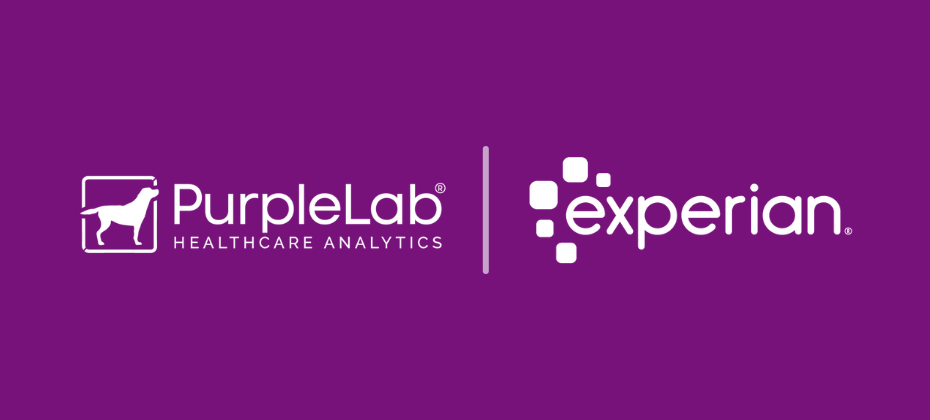
Reach de-identified patient and provider segments at scale across every channel. Pharmaceutical brands and media platforms, including connected TV (CTV), can activate HIPAA-compliant audiences built on real-world clinical and claims data through a new collaboration between PurpleLab and Experian. Targeting de-identified audiences is essential for engaging the right patients at pivotal moments in their health journey, maximizing ROI while safeguarding privacy and improving outcomes. Overall, prescription drugmakers spent $2.97 billion on national TV advertising in the first half of 2025, a 12.2% year-over-year increase, underscoring the growing demand for scalable, privacy-compliant healthcare advertising in premium media environments. Now, whether you're a pharma advertiser launching a new therapy or a platform curating health-focused inventory, PurpleLab’s integration refreshes the media planning ecosystem, offering marketers easier access to the audiences needed to drive impact. Activate with accuracy and scale PurpleLab’s de-identified healthcare segments, categorized by condition, treatment, specialty, and prescription behavior, are now accessible through Experian's data marketplace, streamlining media planning. This integration enables PurpleLab’s privacy-safe audiences to travel from discovery to omnichannel delivery. Experian then handles onboarding, activation, and audience expansion, in accordance with HIPAA and with industry standards. Utilizing Experian’s identity graph, spanning household and individual-level insights, as well as marketing attributes, these healthcare audiences can be: Onboarded securely, matching hashed emails or tokens to digital identifiers Activated across major channels, including CTV, mobile, display, and social Expanded with confidence, reaching more of the target population, patients, or healthcare professionals, without relying on third-party cookies This infrastructure unlocks greater scale and completeness for niche pharma audiences that have historically been hard to reach in digital and streaming environments. For brands navigating fragmented media and tightening privacy regulations, this collaboration provides the clarity and consistency they’ve been seeking. “We know healthcare marketers are under pressure to get it right: to respect privacy, be accurate, and scale. That’s why we’re excited to bring PurpleLab audiences into the Experian data marketplace and make them available through Audigent’s curated deals. It gives pharmaceutical brands and platforms a clear way to plan and measure campaigns, with the assurance that they’re reaching patients and providers when it matters in the right way.”Kim Gilberti, General Manager Curation through Audigent: Premium supply meets premium data For advertisers seeking turnkey media solutions, PurpleLab audiences are now also available through Audigent’s curated deals. Audigent’s curated deals simplify media buying by packaging PurpleLab’s clinically grounded audiences with premium, brand-safe inventory, thus creating a unified package. Instead of stitching together data and supply separately, media buyers can now access pre-built or custom-curated media deals where PurpleLab audiences are already integrated, ideal for health and wellness programming, premium CTV, or contextual content aligned to therapeutic areas. This approach gives marketers both efficiency and accuracy, streamlining execution while maintaining compliance and relevance. “Bringing together PurpleLab’s clinically precise audiences with Experian’s powerful identity and activation capabilities, and pairing it with Audigent’s premium inventory, gives advertisers more than a turnkey solution. It’s the power to launch campaigns that truly resonate, with data and media working in harmony from day one to deliver both efficiency and impact."Scott Ronay, VP, Advertising Sales Real-world use cases: Accuracy with purpose CTV awareness for cardiovascular therapies A cardiovascular brand is launching a CTV campaign to reach healthcare providers involved in treatment decisions. Using PurpleLab’s provider-level segments from the Experian data marketplace, a brand can activate audiences across brand-safe, streaming environments. This strategy enables meaningful engagement with prescribers while maintaining scale and compliance across CTV and complementary digital channels. Cross-device activation for high-impact health campaigns A biotech firm promoting a new therapy needs to reach patients who are likely to have a relevant condition, based on modeled audience segments. Using PurpleLab’s real-world patient segments, the advertiser activates across mobile, display, and CTV, with Experian’s identity graph ensuring household-level consistency across devices. Privacy and scale are preserved, while the brand ensures it’s not wasting impressions on ineligible or misaligned audiences. Closed-loop measurement, built for healthcare Beyond targeting, the PurpleLab–Experian integration empowers advertisers to measure real-world outcomes, not just digital proxies. By utilizing tokenization, Experian enables ad exposure data to be securely matched back to de-identified health events within PurpleLab’s platform. This means marketers can assess outcomes such as: Prescription lift among exposed vs. unexposed audiences Healthcare professional engagement and treatment initiation Patient adherence or follow-through behavior This type of closed-loop reporting is critical in pharma, where traditional metrics like clicks or impressions do not reflect business impact. Now, with token-based match-back, brands can see whether their campaigns are driving real results, securely and compliantly. Ready to reach the right patients and providers securely and at scale? Explore PurpleLab audiences in the Experian data marketplace and Audigent curated deals to activate clinically grounded, privacy-compliant segments across CTV, display, mobile, and more. Contact us Latest posts
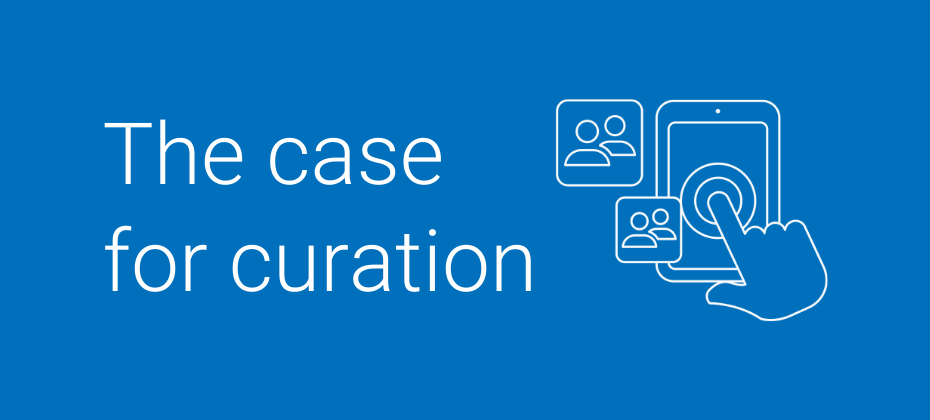
Programmatic media buying isn’t getting any easier. Buyers face rising signal loss, shrinking margins, and growing pressure to perform in a privacy-first world. Add in fragmented tech, shifting privacy regulations, and inconsistent identity signals, and reaching the right audience at scale has never been more complex (or costly). Meanwhile, advertisers demand more transparency, publishers want control, and consumers expect relevance without feeling watched. Open exchanges, legacy data management platforms (DMPs), and spray-and-pray strategies just aren’t cutting it. That’s why curation has become a trending topic in the AdTech space. In programmatic advertising, curation refers to the strategic integration of enriched data and quality inventory into a single package — often executed as a private marketplace (PMP) deal. This approach reshapes how campaigns are built, activated, and optimized by enabling performance-ready buys that reduce waste, increase relevance, and give marketers greater control over outcomes. It’s no wonder then that curation investments are accelerating, PMPs are gaining traction, and buyers are shifting budgets accordingly. Over 66% of the $150 billion+ open exchange programmatic market now flows through curated PMPs, with industry giants like Google publicly backing curation as a core strategy. So what exactly is programmatic curation, and why is it becoming essential for privacy-conscious, performance-driven marketers? Let’s break it down. What does programmatic curation mean in AdTech? Programmatic curation is the process of filtering, structuring, and packaging enriched data with high-quality programmatic inventory — enhanced by real-time optimization to create more targeted, efficient, and transparent media buys. Instead of buying at scale and hoping for the best, curation prioritizes accuracy and value over volume, resulting in more targeted, efficient, and transparent media buys. As privacy regulations reshape targeting, curation is becoming a key differentiator in an increasingly crowded AdTech space. It connects robust data with quality supply, helping marketers stay effective while giving publishers new ways to monetize with control. But not all curation is created equal. Programmatic curation requires three core elements: 1. Unique data Unique, privacy-compliant, and valuable. 2. Strong supply connections Access to quality inventory from publishers at scale. 3. Optimization tools To measure, refine, and improve performance during a campaign and improve performance throughout the campaign lifecycle. Without all of these elements, a so-called “curator” may simply be repackaging inventory without delivering the full value of a curated approach. Why does curation still matter with cookies sticking around? While third-party cookies and mobile IDs like IDFA haven’t gone away, the industry has already pivoted in anticipation of their decline. Even without Google flipping the switch, signal loss is here thanks to Apple’s ATT, tighter compliance rules, and new tracking restrictions. Marketers are dealing with less data, more fragmentation, and fewer reliable IDs. So if you want to run an effective, scalable media campaign today, you need tools that go beyond third-party cookies. That’s why programmatic curation is gaining ground as a better, more sustainable way to buy media. Investments in programmatic curation are growing, and not just for identity resolution. Marketers are leaning in because it: Combines verified audience data with premium inventory Supports ID-free or context-aware targeting Enables scalable, identity-agnostic strategies Improves data quality through enrichment Creates more controlled, pre-approved media paths via PMPs Experts anticipate that, at some point, publishers will have to lean into this method. “Curation will be bigger than header bidding and as big as programmatic or RTB — that’s our bet.”Andrew Casale, CEO Whether cookies stay or go in the future, curation works for an ecosystem that demands smarter, cleaner, and adaptable media buying. What are the benefits of curation and who wins? Curation is one of the few innovations in AdTech delivering meaningful wins across the ecosystem. By bringing better data, cleaner supply, and more intentional targeting into programmatic advertising, it helps brands, agencies, and media buyers drive stronger performance, gives publishers more control, and creates a more respectful experience for consumers. And unlike traditional approaches, curation is built for what’s now and what’s next. Here’s how each group benefits and why it matters. Brands and agencies Curation helps brands and agencies run smarter, more efficient campaigns by connecting high-quality data with premium supply. It delivers: More efficient supply paths with less waste and better performance Lower costs than DMP segments and open exchange buys Cleaner, pre-vetted inventory that aligns with audience and brand goals Future-proofed buying via cookieless and log-level data integrations Stronger targeting and measurement driven by enriched data and actual usage signals instead of modeled assumptions Better outcomes through real-time supply and data optimization Publishers For publishers, curation makes inventory more addressable without giving up control. It enables: Smarter packaging that aligns with buyer needs and campaign goals Higher CPMs by curating inventory above open exchange floors More control over how audiences are accessed and how inventory is monetized Access to higher-value demand through curated, data-backed deals Better protection of proprietary audience in a privacy-conscious environment Consumers At the end of the chain, curation improves the ad experience for those who matter most: your audience. It supports: Higher-quality content alignment for more natural, less disruptive ad experiences tailored to their interests Less invasive tracking, as targeting becomes more data-smart and privacy-aware, with reduced reliance on legacy identifiers and personally identifiable information (PII). Curation is setting a new standard for how data, inventory, and experience come together across the ad ecosystem. When media is smarter, cleaner, and more intentional, everyone wins. What’s Experian’s role in powering curation? With the acquisition of Audigent, Experian is now more than just a premier data provider. We’re also a full-service curation partner. Together, we deliver end-to-end programmatic curation across data, inventory, and optimization, helping brands and publishers unlock smarter, more scalable media strategies. What Experian + Audigent enable Whether you need speed-to-market with pre-curated deals or white-glove custom deals, Experian and Audigent make it easier to activate high-performing, privacy-compliant campaigns at scale with: End-to-end curation across data, inventory, and real-time optimization Pre-packaged and custom PMP deals with built-in performance signals Scalable, privacy-first media solutions aligned to brand objectives, verticals, and KPIs These aren’t just theoretical; curated marketplace deals are already delivering measurable gains. In OpenX, Audigent-curated campaigns increased bid competition by 20% and drove a 118% spike in impressions won over a two-month period. Key benefits for partners By bringing together our data depth and Audigent’s curation technology, we offer our partners a full suite of value-added capabilities, including: High-quality, verified data ranked #1 in accuracy by Truthset and powered by Experian’s identity graph and deep programmatic data insights Data enrichment layers that boost addressability, accuracy, and contextual relevance Privacy-compliant infrastructure built for secure, cookieless data use at scale Platform integration across leading demand-side platforms (DSPs) and supply-side platforms (SSPs) for seamless activation and optimization How Boiron achieved smarter reach with Audigent’s curated PMP strategy A leading homeopathic brand partnered with Audigent to scale customer acquisition for its flu relief product without increasing media investment. They wanted to reach new, privacy-compliant audiences while improving CPA across display and video. Using Audigent’s curated SmartPMPs and CognitivePMPs, the campaign delivered measurable performance improvements: 80% lower CPA on display than historical benchmarks 40% lower CPA on video 30% reduction in data costs Significant media efficiency gains through real-time supply and data optimization Fully future-proof targeting with zero reliance on cookies or MAIDs See how Boiron’s success story is just one example of how curated deals backed by Experian identity and Audigent’s optimization technology can deliver efficiency and impact in a privacy-conscious environment. Our curation capabilities Together with Audigent, our curated solutions go beyond basic packaging. Every deal is designed for performance, privacy, and relevance, so you can activate smarter media with greater confidence: Deal ID-ready audiences for fast, turnkey activation Performance-specific curation, including viewability, CTR, and outcome-based targeting Custom audience + inventory packages tailored to campaign goals Vertical-specific curation for industries like auto, retail, CPG, and financial services Real-time optimization signals embedded into every curated deal Don’t wait: Curate today The future of programmatic advertising won’t be won by those waiting for perfect signals, clean cookies, or simplified tech stacks. It’ll be won by marketers and publishers who embrace smarter, cleaner ways to activate their data, inventory, and strategy now. With Experian and Audigent, you’re not just getting better data but also a partner that helps you activate it with accuracy, privacy, and performance at scale. Whether you’re trying to reduce media waste, gain supply path control, or future-proof your campaigns, curated deals can get you there faster. Let’s build a curation strategy that gives you control in a chaotic ecosystem. Latest posts
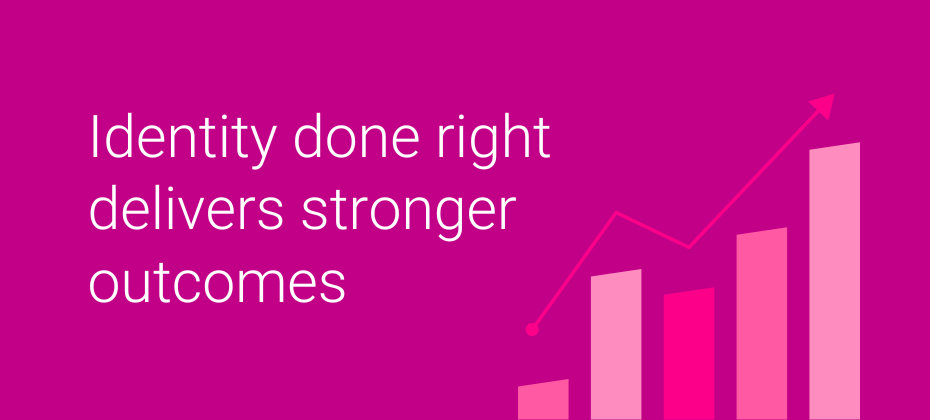
Traditional audience signals are fading, and the industry is facing a new reality: identity is no longer just about connectivity, it’s about outcomes. At Cannes Lions 2025, leaders from AdRoll, LG Ad Solutions, Magnite, MiQ, OpenAP, PubMatic, Stirista, Tatari shared how innovative identity approaches are cutting through the noise, improving performance, and delivering real ROI. Their insights reveal a clear path forward for those ready to turn identity into a performance driver. Here’s how you can apply the same principles to drive performance. 1. Make identity a performance engine Treating identity as a performance driver leads to measurable results by creating a clear connection between marketing efforts and outcomes. Identity resolution enables the effective retargeting of audiences, accurate performance attribution across connected TV (CTV), and personalized campaigns across multiple channels. By building household-level graphs and incorporating alternative identifiers, marketers can maintain accuracy as traditional signals change. Activating first-party data across both digital and offline channels ensures that every interaction, whether on-screen or in-store, can be tied back to specific actions, helping optimize campaigns, and improve ROI. How Experian helps Experian’s Consumer Sync solutions create a clean foundation and persistent identity spine by resolving and expanding your first-party data across digital and offline IDs (hashed emails, mobile ad IDs, CTV IDs). This enables activation across omnichannel campaigns, from CTV to social, and connects data to outcomes. "Identity resolution is very important to our overall strategy today. Without that identity linkage, we couldn’t speak the same language as our clients. For example, a client might want to target people who engaged with their brand’s website four days ago via CRM data. Without identity resolution, that’s not possible. But with it, we’re changing the narrative – making TV a hospitable place for deploying first-party data and driving outcomes."Mike Brooks 2. Build trust through responsible data practices Consumer trust begins with responsible data practices that prioritize transparency and privacy. Deterministic match rates ensure accuracy by connecting data points with confidence, while clear methodologies provide visibility into how data is used. These practices improve overall campaign performance and protect consumer privacy by ensuring that every interaction is respectful. How Experian helps Experian’s privacy-first approach ensures that all data activation occurs with compliance and consent. By maintaining high match rates and adhering to transparent methodologies, Experian helps build trust and strengthen long-term connections with audiences. "If people don't take any precautions and they don't actually care about data in the public, they probably don't care about it in private. Experian cares about data privacy and compliance, and that made it a no-brainer for us to work with them. When we combined our focus on privacy with Experian’s expertise, we knew we had to do it right – and we did."Henry Olawoye 3. Expand reach while maintaining high match rates Having more data points to identify individuals leads to higher match rates and broader reach. Enriching records with additional identifiers, like hashed emails, MAIDs, and CTV IDs, makes it easier to connect data across channels and create a unified view of each person. This approach ensures that campaigns can scale effectively while maintaining the accuracy needed to deliver personalized experiences. How Experian helps With a database of over 5,000 attributes spanning 15 verticals and categories, Experian provides a comprehensive view of consumers through a single provider. By sourcing data from over 200 sources (including public records, consumer surveys, and purchase records), Experian enables the creation of detailed audience profiles. This enriched data focuses on identity, creating a unified view of individuals that helps pinpoint the best opportunities to engage effectively across channels and deliver measurable outcomes tailored to specific audience needs. "We’ve been able to extend our IDs by an average of 6.5 different identifiers, with a 70% match rate. That extension is huge – it underpins a lot of the connectivity in our platform and allows us to bring 300 data feeds together to make the most of them."Georgiana Haig 4. Create unified campaigns with interoperability Fragmented data often leads to fragmented results. Interoperability ensures that data from different platforms and systems can work together, creating a unified view that makes measurement and attribution more actionable. How Experian helps Experian simplifies interoperability by ensuring consistent data usage from activation and measurement. By connecting data from various sources, Experian enables a cohesive strategy where insights can be shared across publishers, measurement providers, and ad servers, ensuring campaigns remain aligned and effective at every stage. "The ecosystem benefits from optimized interoperability. We’re focused on allowing advertisers to work seamlessly across IDs and identity solutions – from activation to resolution – so the same data set is used consistently across publishers, measurement providers, currencies, programmatic ecosystems, and ad servers."Chris LoRusso 5. Use AI to amplify, not replace, strategy Artificial intelligence (AI) is transforming how campaigns are optimized, but its success depends on clean, consented identity foundations. AI can analyze vast amounts of data to refine targeting, manage frequency, and uncover new efficiencies, but only when built on a strong identity framework. How Experian helps Experian uses AI and machine learning to deliver highly personalized marketing solutions. Advanced clustering algorithms in Experian’s Digital Graph analyze and create household and individual device connections, improving targeting and measurement accuracy, while machine learning models improve consumer insights by inferring household composition where data is limited. These innovations enable AI tools to quickly generate tailored audience solutions, analyze contextual signals in real time, and identify opportunities that improve results while maintaining a human centered approach to decision making. "AI is a copilot to your marketing initiatives. For it to perform, it needs insights and information to learn from. That’s why having a strong foundational data asset rooted in deterministic data is so important."Howard Luks Five moves to turn identity into profit Here are five steps to get started: 1. Audit your data health Make sure your audience data is accurate, up-to-date, and complete so you’re starting from a strong foundation. 2. Layer in more context Enrich your records with details, like lifestyle, interests, or buying behaviors, that help you speak your audience’s language. 3. Unify touchpoints across channels Link your data so you can see the same person or household whether they’re engaging on CTV, mobile, desktop, in-store, or through other touchpoints. 4. Activate AI for stronger campaigns Use AI tools to fine-tune targeting, control ad frequency, and find hidden opportunities once your foundation is solid. 5. Align data across systems Ensure interoperability so data from different platforms and systems can work together, creating a unified view for actionable insights. The common thread across these insights is connection: connecting data, teams, and outcomes. Marketers who act on these imperatives will be ready for whatever new channel, format, or privacy rule comes next. Let’s start a conversation about how Experian can help you turn identity into ROI Latest posts